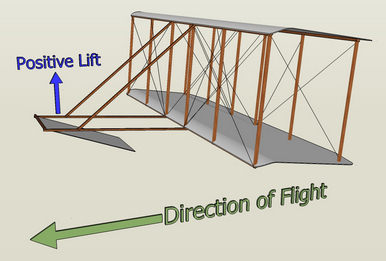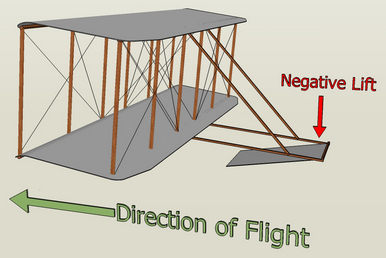 Tail First
Tail First
There were several reasons the Wrights put the elevator out front. On their first gliders, it greatly simplified the pitch control. All Wilbur had to do was reach out front and raise or lower the trailing edge of the elevator surface. It also gave him a visual reference so he could tell when he was climbing or descending. And since he was flying head-first in a prone position, the out-front elevator gave him some protection in the event of a crash.
The biggest reason, however, had to do with lift. Aerodynamic control surfaces create positive or negative lift, depending on which way they are turned in the airstream. When an elevator is behind the wings, it must create negative lift to raise the nose of the aircraft and climb. In front of the wings, the elevator must create positive lift to achieve the same effect. Since early aircraft had so little lift to begin with, the Wrights did not think it a good idea to create negative lift when they needed altitude.

With the elevator in front, it had to be angled to produce
positive lift (blue) to pitch the nose of the glider up.

If it had been in back, the elevator would have
had to be angled to produce negative lift (red).